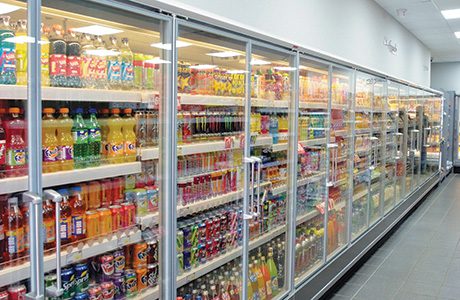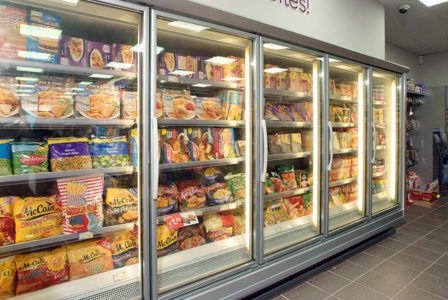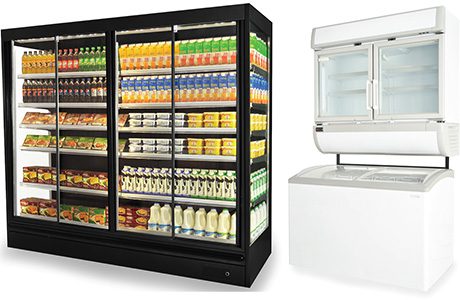Planning your refrigeration properly, having the best chillers and freezers, and maintaining your system well can slash energy costs and transform the look of your store but there’s a lot to consider. Scottish Grocer spoke to one of Scotland’s main shopfitting firms and a leading specialist refrigeration supplier.

THERE are signs that Scotland’s convenience stores are on the refitting and refurbishment march. After a frustrating period when many retailers looked at general economic conditions and exercised caution about their development plans – and others found it difficult to find banks that would lend – projects are beginning to take off.
And at the heart of those projects, frequently, is serious work on in-store chillers and freezers.
The rise of the big night in, the growing importance of food to go, the increased willingness of consumers to shop local, often at the last moment and frequently for chilled food and fresh produce, means it’s never been more important for stores to have good refrigeration and, if space permits, a lot of it.
On top of that the equipment is getting better, and much cheaper to run. And on top of that there are tax advantages for those who invest in appropriately energy-efficient equipment which qualifies for the Enhanced Capital Allowance and helps the country meet its carbon footprint obligations.
But there’s more than one type of chiller and different types and systems of refrigeration. So what are retailers going for and how should they approach a decision on new refrigeration equipment?
According to Craig Pringle, refrigeration business development manager with major Scottish shopfitting company Vertex, many more Scottish retailers want good looking chillers complete with doors.
Modern chillers with double glazed doors are often 50% more efficient than the old equipment they replace, he said.
Of course, it is possible to retro-fit doors onto old equipment and that will make a difference too. In fact many open-deck chiller cabinets that had been provided by supplier companies like soft drinks firms have had doors fitted.
But new chiller units are typically far less bulky, highly energy-efficient and work well in remote systems in tandem with the latest refrigeration compressors. If retailers install new fridges and energy-efficient LED store lighting the savings in running costs can be very substantial, the pay back time on the investment will be quite short and the life of the new units is likely to be considerable.
Vertex supplies ECA-approved equipment from a variety of companies. Two of its most popular brands are Arneg, well-known as a manufacturer of high-quality units and suited to the specification on many chain retailers and symbol groups, and ColdCo a range that Craig Pringle says also provides high quality equipment but at competitive prices.
It’s still important for store owners to discuss things with their shopfitter or chiller supplier he said. But he reckons many retailers are now much more savvy about equipment and, especially, about energy efficiency.
And many c-store operators are putting in more refrigeration than before.

In a medium sized c-store he reckons many owners would look for a minimum chiller run of 5m for soft drinks and 5m too for beer and wine.
“Certainly soft drinks is massive. One retailer I know, who did a refit recently now wishes he had put in more than 5m.”
And there’s certainly a developing chilled food and fresh produce trend in stores looking to attract top-up shoppers, he said.
“There are a couple of sites that we’ve done recently where we’ve put in 7.5m for dairy, ready meals, that type of thing.
“Fresh has been very good and so has frozen. We did a Family Shopper in Dundee that has 12 freezers.”
While Pringle acknowledged that retailers were doing their homework and often knew what they wanted he said it was still important to work closely with a shopfitting or refrigeration specialist.
Technical equipment like compressors for remote systems of refrigeration, controllers and timers are getting better all the time and different items meet different needs.
But, he argues, new refrigeration delivers real benefits and there’s never been a better time to invest.

• At refrigeration specialist Capital Cooling, marketing manager Fraser Scotcher has also noticed significant interest from retailers in installing new chiller and freezer equipment.
But he was especially keen to say that there were very many good reasons to discuss matters in detail with experienced suppliers.
The firm both deals direct with customers, the retail end-user, and with shopfitting firms. Often it will be involved in a site visit at a store and it’s then, he told Scottish Grocer, that some of the most important and beneficial decisions can be made.
One of those can involve whether the shop uses remote refrigeration, where the compressor will typically be in the back shop and be fitted through to the exterior or integral units, where all the equipment is contained in the unit, or a mix of the two.
Capital Cooling designs, commissions and supplies both but it has, he reckons, become a specialist in integral, because it realised that there was still a need in
many stores and other suppliers weren’t modernising or developing smart integral units.
“Integral can have a lower cost to start with,” he said.
“And integral’s a bit more flexible. If someone decides they want to change their store layout, they’re easier to move.”
And a store might have difficulties with planning permission for a remote system with equipment on an exterior wall.
The company’s main integral unit the Troy Eco-Cool had been designed to have the lowest possible base and to allow the greatest possible merchandising area and he says it is also extremely energy-efficient. It aims to overcome those aspect of integral chillers that on other units could be seen as negatives.
On the other hand, there are times when remote equipment suits a store’s needs much better. The key thing is to discuss matters in detail ahead of installation, he said.
If retailers are more interested in effective and efficient chillers the same is true of freezers, he added.
One of the company’s recently developed units, the Talisman Vision, combines a chest freezer, for large items, and a double door vertical component, suitable for those items that benefit from clear display and merchandising.
And Scotcher said there was growing interest in hi-tech controllers including those from Glasgow-based Resource Data Management, which has controllers for units as well as highly sophisticated controllers that can fit into a store’s wider IT management system.


















